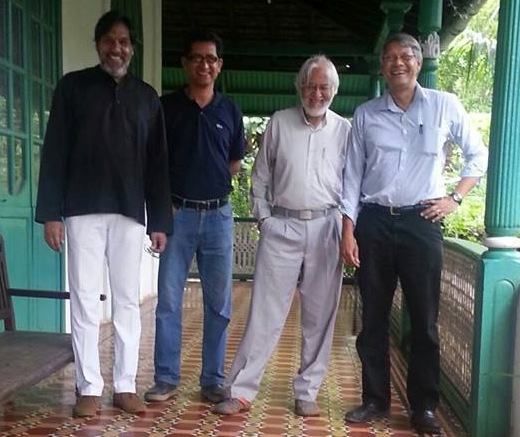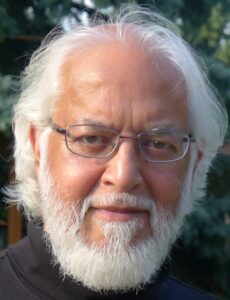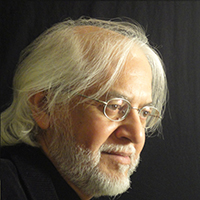Lifelong repercussions of a split-second decision
I was in the midst of my final architectural examination, at the Bandra School of Art, when the director approached me. A major design competition had just been announced, open to both professionals and students of architecture, and the director was insisting that I participate. I looked at him askance. He was serious. I refused. We began to argue under our breath, in a hall full of students furiously writing.
The director was a wonderful man, usually laid-back, and the Bandra School of Art inadvertently offered us the freedom to pursue our own paths. He found a way to appeal to my integrity, pointing out that our college’s honour was at stake. The odds were clearly stacked against me. The competition’s organizers (the best college in the city and among the best in the country) had chosen a timing that would disadvantage the then only two other colleges in the city, both in the midst of their exams. While the organizing college was making assistants and resources available to its star student who was unpressured by any exams, I would be on my own with just a weekend between exams to take a stab at a design. I relented.
The competition would turn out to entail as much controversy as the one that had been concurrently announced in 1981 in America to commemorate veterans of the Vietnam War. The Indian competition was called the Martyrs’ Memorial, and was intended to honour villagers who had died fighting the British in India’s War of Independence. The design specifications called for a multipurpose hall, administration office and a memorial pillar with its own court. The hall was easy; the pillar, paralyzing. What form could one sincerely give to a memorial pillar devoted to the ultimate sacrifice? My fledgling talent paled in insignificance by the fact that the martyrs had given their lives for a cause. The second challenge was that the memorial was to be constructed in hundreds of villages in Maharashtra which, in my mind, would dilute its sanctity. You cannot rubber-stamp architecture. Furthermore, how do you repeat a design and yet retain its site-specificity?
My response to both challenges was a singular move: a hall constructed with masonry walls and clay-tiled sloping timber roof and a court with a tree. The tree would either be an existing one around which the complex would be built, or the village’s favourite tree transplanted, or planted afresh by the villagers who would nurture it (my favourite). With its roots in the earth and branches reaching for the sky, with its shedding of leaves and enactment of life and death cycles, and with a dedicatory plaque, the tree would make an apt memorial.
The competition brief called for a memorial in 105 villages. This approach ensured that each memorial would be as unique as its tree.
Hundreds of entries were whittled down to just two. The judges apparently preferred the simplicity of my minimal approach. However, one judge, a government representative, detested my design, opting for the organizing college’s proposal with its flaming torch atop a forty feet high concrete column. Although outnumbered, he manoeuvred the adjudication process by alleging that I had not truly ‘designed’ a victory column. Hence, my incomplete entry ought to be disqualified on technical grounds.
Appalled, the other judges quietly communicated to the director of my school that if I were to add a token column, they would be able to award me the first prize. They assured him that the column would be dropped when the project was built.
The director invited me to his house for dinner which was unprecedented. I assumed it was a prelude to good news. But during an evening of small talk, I began to realize that something was amiss. Finally, my host got around to conveying the judges’ request.
I refused.
The director turned desperate. The prestige of the college was at stake! When that did not work, he reminded me how an early high-profile prize would jump-start my career. I pointed out to him that winning via backroom dealings would be worse for me and the college than losing. I walked home that night, heartbroken and angry with my director, with the judges, and mostly at my own stubbornness.
I lost the competition.
Years later I moved my base to Canada and visited India during the monsoon season. My home in India is a library den with a bed and space for a prayer rug, which my dear friend Shabbir constructed for me atop his house in Lonavala.
While I was in Canada, a column appeared in Design Today titled “Awards & Illusions” and devoted to the Martyrs Memorial competition that had taken place almost thirty years earlier (and now, another decade later, it reappeared on ArchitectureLive!):
Unfortunately, the jury was headed by a politician (of cement-scandal fame) who had the deciding vote… Surprisingly, there was not even a whimper of protest at the obvious injustice done in the choice of design for the award…The student whose design was rejected moved on…a young architect, now a passionate poet and calligrapher, living in Canada and probably still disillusioned… This is the story of a misplaced award, and the sad loss of a brilliant design philosophy, appropriate for rural India.
The author, architect Dean D’Cruz, was unbeknownst to me until then, one of the many members of the winning team of the other college. Gratified and happily vindicated, I got in touch with Dean. Shabbir drove me down to Goa along with another architect from Lonavala, our mutual friend and pioneering animator, Ajit Rao. It turned out, that Ajit too was a member of the team that won the Martyrs Memorial. A serendipitous chain of events had begun to occur.

Since meeting Dean, he has arranged for me to give talks there during my monsoon visits. His family hosts me each time in his palatial house in Goa, where I enjoy a bedroom designed as a writer’s retreat with its own verandah opening to the woods.
Some years ago, when Shabbir was on a brief visit to New York from India, my wife Zeba and I, along with our children Noah and Zahra, drove down to meet him. We intended only a day trip, but Shabbir insisted that we see architect Kayed who was waiting to meet us. I had never met Kayed personally, but Shabbir had earlier put us in touch, and we had exchanged emails. Kayed suggested we meet in North America’s tallest hotel, the Marriott Residence Inn Manhattan/Central Park.
When we walked into the lobby, Kayed gave me a hug. He then turned around and told Zeba, “I’ve always been wanting to meet him!” My family were all smiles. Kayed too was in the winning college team, and he never forgot my design, explaining, “The central element of the design was a tree which I thought was very poetic. It was my first encounter of someone making an anti-architecture gesture. And what happened to the first prize winner?” he continued, “From last accounts, he gave up architecture altogether.” I guess we each do, what we have to do, as the song goes “Kya Pata Hum Mein Hai Kahani / Ya Hai Kahani Mein Hum?”
Kayed hosted us on a 65th-floor unit of the Marriott. When I woke up in the morning, our daughter Zahra was silently taking in the aerial view of the city framing the forest, as the Martyrs Memorial had framed a tree. What throbs in the heart of architecture is not architecture.

I joined her while thinking about the young student who, over three decades ago, despite all the pressures within him and from outside, found in himself the resolve to take the right decision. Little did he know then that when we do the right thing we may experience failure, but what grows from it is success. Indeed, as we learn from the Quran (14:24), a good word, like a good tree, with its roots firmly fixed in the earth and branches high in the sky, keeps bearing fruits.


About the Author
H Masud Taj is an Adjunct Professor of Architecture at Azrieli School of Architecture & Urbanism and continues his practice as an architect, poet and calligrapher. His writings can be accessed on Academia.
Open competitions have often been a subject of controversy in India- an opinion validated by several recently held competitions.









3 Responses
A missed tale in the Tale of a Tree!
I’m sure there will be more than a handful of people who have read the article and would remember what happened on that night- the night when the jury changed their minds 3 times in 3 hours. (Or someone made them change their decision and they succumb.)
I remember Masud’s unassuming, simple straight lines with freehand on ordinary tracing paper. I thought it was so apt for the simple concept that was straight from the heart!
I believe this deep simplicity must have touched the jurors’ hearts too, and they declared Masud to be the winner!
But on Doordarshan this was the drama:
the first evening news (Batmya in Marathi at 7:30 pm) declared Masud as a winner. The second news (Samachar in Hindi at 9 pm) declared Masud and the other (from JJ – don’t remember his name), both sharing the first place. And the last news (in English at 10 pm) declared the other guy as the winner!
Who lost the completion and who won didn’t matter. What got engraved in me while in my first year of architecture, is that tree. I’m happy that I’m not the only one- other winners are also with me 🙂